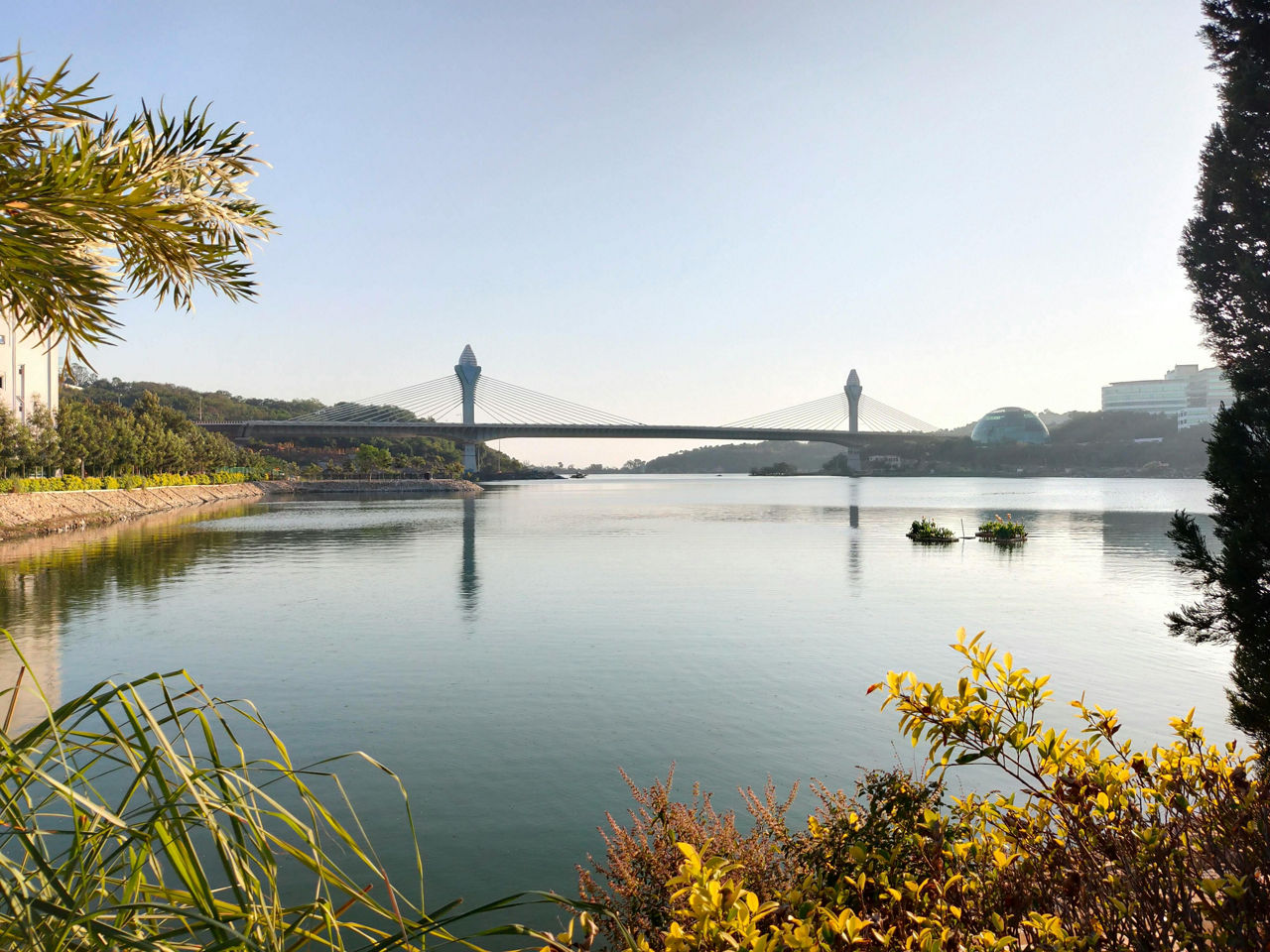Hyderabad’s HYDRAA: An Exercise in Urban Water Body Reclamation
Hyderabad, once known as the "City of Lakes," is addressing urban flooding and water body encroachment through HYDRAA, reclaiming lakes, ponds, and buffer zones impacted by decades of unplanned growth. However, the programme raises critical questions about balancing ecological preservation with urban development. How can cities address such challenges while ensuring social inclusion and sustainable outcomes?
The Indian city of Hyderabad, which also used to be known as the “City of Lakes”, was built on the banks of the River Musi. It is reported to be home to around 7,000 water bodies, both natural and manmade. Over time, the city has become vulnerable to floods due to the gradual destruction of a framework built by its erstwhile Nizam rulers to make the city "flood-proof".
Making preservation of lakes, ponds, and other water bodies a top priority, the Government of Telangana — in which Hyderabad is located — created HYDRAA (Hyderabad Disaster Response and Asset Protection Agency) on July 19, 2024, to identify and demolish encroachments in lakes, ponds, water bodies, and nalas, that have caused urban flooding at the slightest rains.
Damage Control and Reclamation
HYDRAA should be seen as a policy instrument and to restore that balance that had been damaged by rapid and unregulated urban growth and myopic governance. According to reports, so far about 119 acres have been reclaimed, and counting. Also, with the pace at which HYDRAA is moving, hundreds – if not thousands – of acres in over 185 lakes in the Greater Hyderabad Municipal Corporation (GHMC) and about 650 lakes in the Hyderabad Metropolitan Development Authority (HMDA) limits are expected to be restored to their original levels. Further, public spaces like parks and other government lands too will be reclaimed. Other cities and even states facing similar crises could replicate the HYDRAA experiment.
However, before going into the situation on the ground and what necessitated the creation of an organisation like HYDRAA, it is pertinent to understand the background of Hyderabad and why things have come to such a pass over a century.
The Background
In September 1908, a tropical storm in the Bay of Bengal produced heavy rains which then moved inland creating cloudbursts on the upstream of Hyderabad. As a result, the city experienced disastrous floods due to the overflowing of the Musi. About 430mm of rainfall was recorded within a day and the water level reached around 3m in several places.)
After the flood, the Hyderabad Government set a course of action for a series of changes to prevent a further disaster. It appointed M. Visvesvaraya, the then Dewan of Mysore state to study and prepare a report with suggestions to avoid further flooding. Adopting his suggestions, storage reservoirs 100 feet above the city which would control floods by storing the excess water from the Musi, were designed to be constructed.
For this, Osman Sagar and Himayat Sagar, the two reservoirs that now serve as a major source of drinking water for a significant part of the city, were constructed in 1920 and 1927 respectively. The river's catchment was changed considering long-term environmental impacts. Along with that, around 3,000 small lakes were developed in Hyderabad in addition to the already existing irrigation lakes in the city. These water bodies deployed an interconnected network to protect the city from floods.
Benjamin Cohen from the Department of History, University of Utah argues that “The Musi river flooding in 1908 acted as a watershed moment to the then rulers of Hyderabad state and helped in rebuilding the city and the river”. Although Hyderabad has not witnessed similar amounts of precipitation ever since Musi floods, the problem has not been solved completely.
Over time, these water bodies have simply disappeared. Studies suggest that the city has lost over 3,000 lakes since the 1990s. Rapid urban growth in the past four decades has resulted in the destruction of this physical heritage on a large scale. In a free for all, private agencies, individuals, and even the government, have encroached these lake beds and converted them into built-up area.. Exacerbating the situation, they have also encroached many water channels that acted as floodwater carriers between adjacent lakes in a catchment area. It is the improper implementation of building regulations and pollution control laws that led to these encroachments and water bodies’ pollution. Remote sensing studies revealed that the increase in the built-up area went from being 245 km2 in 1973 to 587 km2 in 1996; an overall increase by about 136 percent in two decades.
For instance, Hussain Sagar, originally constructed to supply drinking water to the city has not been used as a source of drinking water since 1930. It is observed that this lake, which is marked as the centre of the city, has shrunk by 40 percent due to encroachments. Satellite data-based evidence revealed that in the last 25 years, the lake has lost about 121ha. (EPTRI, 1996:48)
Vast urban spaces of water bodies have since been steadily occupied by land sharks and other enterprising developers, especially during the summer months when water levels receded, by blocking inflows so as to shrink the size. Assessments of the National Remote Sensing Agency (NRSA), using satellite data, have revealed that lakes in Hyderabad shrunk sharply by 61 per cent between 1979 and 2023.
To correct this, Telangana’s current Chief Minister A. Revanth Reddy’s government is working for the reclamation of the lakes — at least the vast tracts of encroached lake beds as well as the land in the Full Tank Level (FTL) and buffer zones of water bodies — in a ‘Save the Lakes’ campaign. Adopting a pragmatic approach, it is focusing on encroachments of the past 30 years, from 1979 till 2024, after cross-checking NRSA data and triangulating with ground truths about flouting of FTL and buffer zones, since laws prohibit any kind of construction in these areas.
Hitting the Ground
HYDRAA has been positioned as a cornerstone of its environmental and urban management strategy. It is intended to serve as the environmental watchdog and has picked a no-nonsense IPS Officer Avula Venkata Ranganath as Commissioner.
In the first phase, encroachments by public figures are being removed following the due process. Some of those affected by the government’s campaign, including well-known public figures from the Telugu film industry, politics, and businesses, who have built convention centres, colleges, and schools on encroached lands, have approached the Telangana High Court for relief. In a few cases, the court has directed that HYDRAA could continue with its mandate only after following due process, such as slapping notices on the encroachers.
However, educational institutions will be given time to complete the academic year before clearing the encroachments. The government’s approach reflects its commitment to safeguarding the academic prospects of students while addressing the structural concerns of the institution.
Needed: Political and Administrative Will
HYDRAA is also turning to remote sensing data and other technological advances. In fact, it has devised a plan to safeguard lakes by deploying virtual fencing and surveillance cameras since the physical barriers, warning signs and demarcations were destroyed by real-estate sharks and other vested interests, who built illegal structures. Its campaign is also moving ahead in a measured manner. Assessments must be made of the encroachments of about 600 lakes in the Hyderabad urban sprawl, including India’s first biodiversity heritage lake Ameenpur, as designated by the Union government.
However, this is not a case just confined to India’s fifth largest city. The picture in various cities across India is similar, if not worse.
A Pan-India Problem
Once referred to it as the Land of a Thousand Lakes, Bengaluru, the tech capital of India, today is a pale shadow of its past glory. In 1960 the Garden City had 262 lakes but, today, only 10 of them hold water. With rapid urbanisation and a growing population, there has been an equally rapid disappearance of lakes and water bodies at the city and state level. According to the Union Jal Shakti Ministry report, Karnataka lost an astounding 13,000 water bodies in just one year, between 2021 and 2022.
Ahmedabad, as well, had 137 lakes in 2001 but as per recent reports, construction has been seen on 65 of them. The national capital Delhi, too, is being robbed of its water bodies, with a Delhi government report stating that nearly half (49.1%) of Delhi’s official water bodies do not exist anymore – they have either gone “missing” or have been encroached upon.
The problem is no longer local or national one. It has become global now. The global urban population facing water scarcity is projected to increase from 933 million (one third of global urban population) in 2016 to 1.7-2.4 billion people (one third to nearly half of global urban population) in 2050, with India projected to be the most severely affected,” according to ‘United Nations World Water Development Report 2023: Partnerships and Cooperation for Water’5. That is ominous prediction which makes protection of water bodies all the more urgently imperative.
Displacement and Resettlement
However, there is an underside to this burning urban governance and environment problem. HYDRAA has also sent notices of demolition to people who have built houses in the Full Tank Level (FTL) and Buffer Zone and have been living there for many decades. If their houses are razed, hundreds of families will be rendered homeless.
This has necessitated a thinking and debate to come out with a clear policy to compensate and rehabilitate such people the way people who have become land and homeless due to large projects. The well-known examples are displacement of people under the many projects that have come up on the Narmada River and recently even in the world’s largest Lift Irrigation project – Kaleswaram Lift Irrigation Project - in Telangana.
Anjal Prakash, Clinical Associate Professor (Research), ISB, says lake restoration is not just about land and water. “Displaced citizens must be rehabilitated in a way that aligns with environmental reclamation, ensuring their dignity and livelihoods are preserved. A holistic approach is essential — one that combines ecological sustainability with social inclusion, providing these individuals with resources, education, and opportunities. Communities should be involved in these restoration efforts, creating a sense of ownership and partnership. This integrated approach ensures that revitalised ecosystems not only support biodiversity but also empower those most impacted by change, fostering resilience and hope for generations to come,” he says.
While HYDRAA has recently said that it will spare homes built on the land of water bodies where people are residing. So, the economic, social, and environmental cost of such development, in the form of rehabilitating displaced people, is a challenge for finding appropriate solutions and framing policies.
A Case Study in Governance?
The HYDRAA initiative can be seen as an example and a clarion call for the rest of the nation to wake up rescue and reclaim its water bodies.
The central government, in collaboration with state government and local environmental groups, must establish a Wetland Task Force for every state, with a clear mandate to reclaim every water body in its jurisdiction by clearing out encroachments, demolishing illegal construction, and preventing changes in land use.
References
-
Impact of Urbanisation On Lakes: A Case Study of Hyderabad, by M. Vani, M.Kamraju, M.Sc Students, Department of Geography, Osmania University, Hyderabad, Telangana. SOURCE: Journal of Urban and Regional Studies VOL.5, No.1 August 2016.
-
https://www.researchgate.net/publication/357377775_Hyderabad-A_failed_floodproof_city
-
-
https://www.dailypioneer.com/2024/columnists/reclaim-water-bodies-to-ward-off-water-crisis.html
-
United Nations World Water Development Report 2023: Partnerships and Cooperation for Water.



